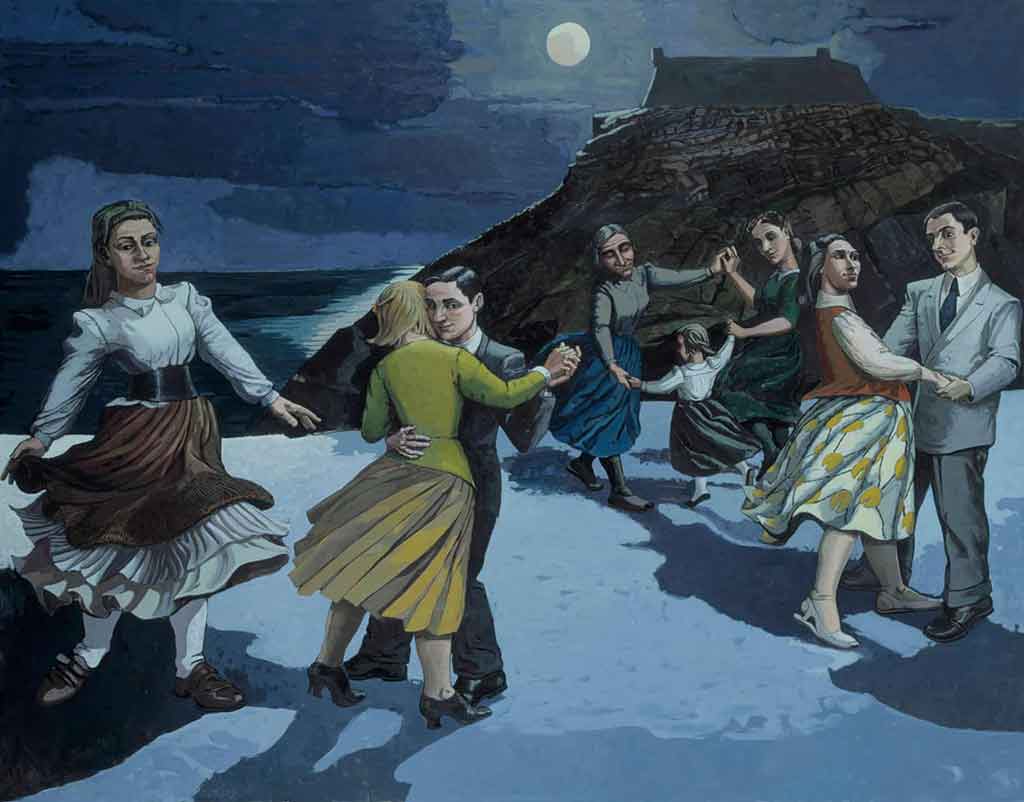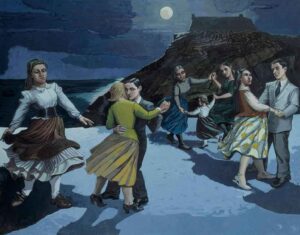
The Dance, 1988 Photograph © Paula Rego
Catheryne Kelly

Photograph © Paula Rego
How do you solve a problem like reviewing Paula Rego? The fact is, I’m at odds with where to start. This is a retrospective that over-delivers, overstimulates, and quite frankly I’ve been given too much to think about. Yet I’d be disappointed with anything less. Her work minnows in and out of fantasy and reality, politics and folklore, voodoo and surrealism – it’s innately subversive and slippery – and it’s part of the fun to mentally bathe in the utter weirdness it exudes. It’s a shame, then, that Tate Britain, across their collection of over six decades’ worth of her art, managed to hamper the spirit of an artist whose work demands imaginative misinterpretation.
They’re intent on presenting her as a political artist. This is not untrue in the main; Rego’s teenaged radicalism (a product of her experience under Salazar’s fascist dictatorship in Portugal) is continued even in her most recent series on gendered experience. Yet despite this prolonged focus it’s surely a stretch to label her art ‘political’. Broad strokes won’t work with Rego, her corpus is too vast and she’s got too much to say. Forever sporting a complex liminal standpoint through a multitude of media, she plays with mixed messages and sensations.
With such a casual approach to clarity comes an obscene amount of boundary blurring. Animals become people and people become animals. From the predatorial gazes of The Family, to the visceral, feral rage of Dog Woman, social norms are scrapped, and the scales of power are stacked jarringly. In a triptych series, one of Rego’s trademark full-skirted, dark-haired girls torments an expressive dog while her own, abstracted look never wavers. She ties a heavy chain around her companion’s neck or suggestively lifts her skirt up to his total incomprehension. Ignore the wall text and it’s all there to grasp, here she’s merging the bestial and human to foreground the diffusion of ambiguity, abuse, eroticism and violence. There’s a play-off between darkness and Disney, and as is often seen in her most arresting pieces, the haunting undertones of this work are quelled by a soothing picture-book aesthetic that lures us into repressed subconscious depths. Read the gallery’s key beside it, however, and any richness of association is limited to symbolizing the artist’s strained relationship with her deteriorating husband.
Rego’s work is not that egocentric. The very pleasure of experiencing her work stems from its evocation of universal feelings that don’t have a name. The reception that Rego demands is so utterly subjective that the wall texts are rendered completely void.
Art articulates itself. If an artist needed words, they’d use them. We rely far too much on the security that language brings to define, to explain, to tell us what we should and shouldn’t think every day. No doubt, it’s quite effective – what’s signified by language is arguably a lot closer to the sign that we use to describe it – every ‘thing’ has a name after all. But in art, particularly Rego’s art, just one sign could give off a myriad of impressions, and that’s when we feel lost at sea. Let it wash over you then, indulge in the obscurity. There’s something almost baptismal about unmediated experiences with great art. Just as Rego herself shouldn’t be reduced to enact a singular activist role, don’t let Tate’s descriptions reduce your reception of her work to conform to one prescribed conclusion, one sensation, one feeling. Some experiences aren’t meant to be tacked to the wall with words like pins through dead butterflies.
Paula Rego at Tate Britain, until 24th October 2021.
Volume 36 no 1 September / October 2021

